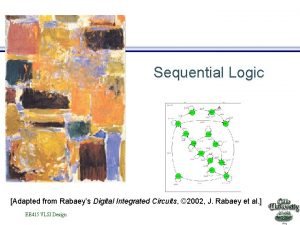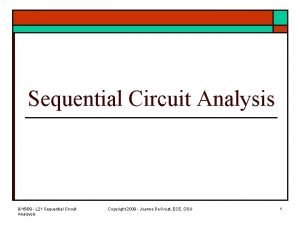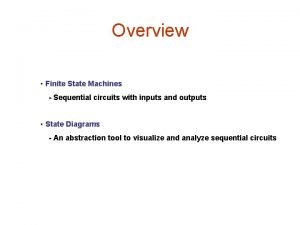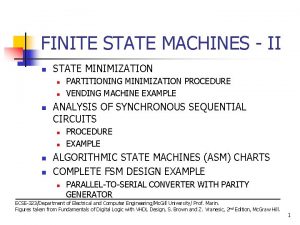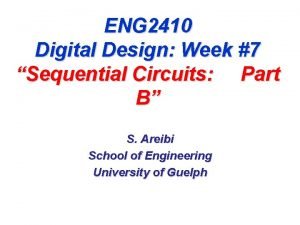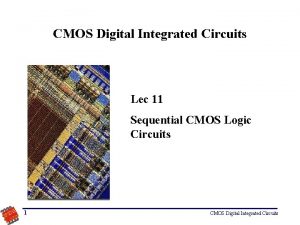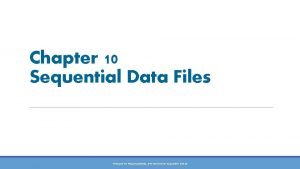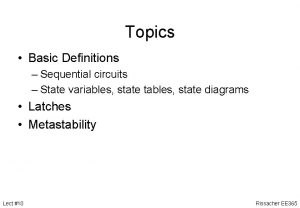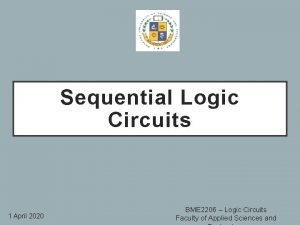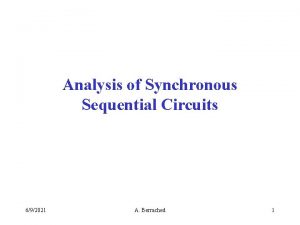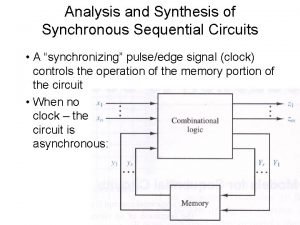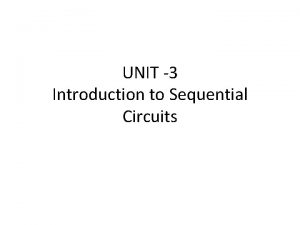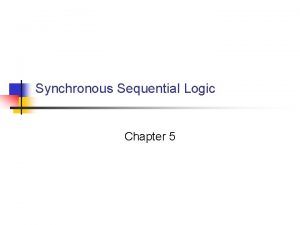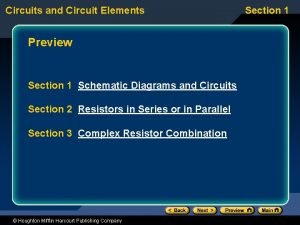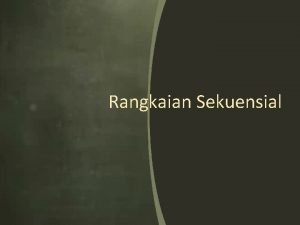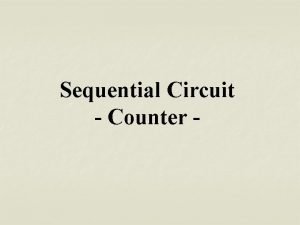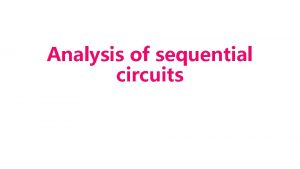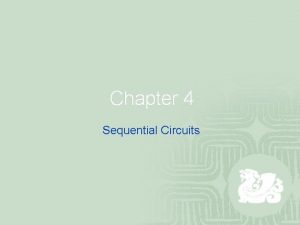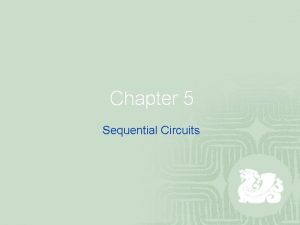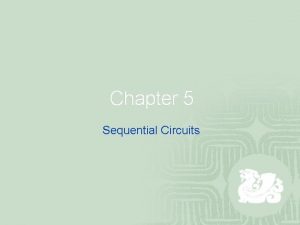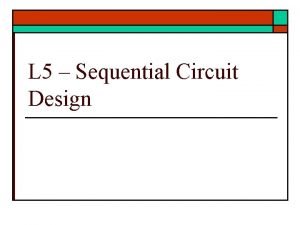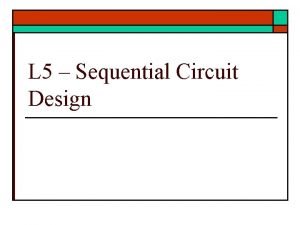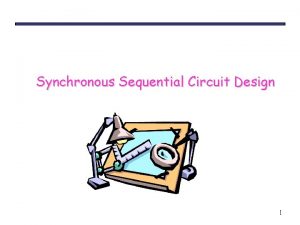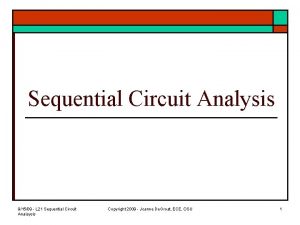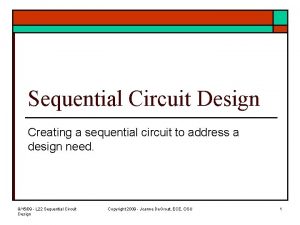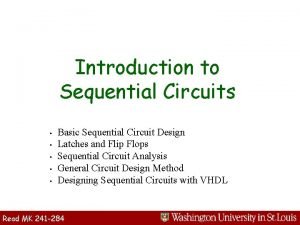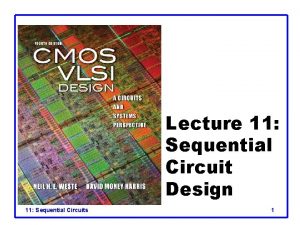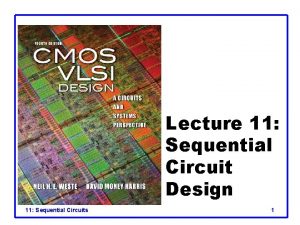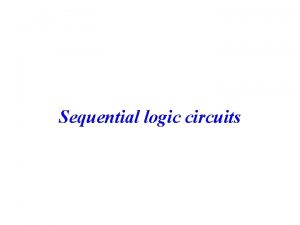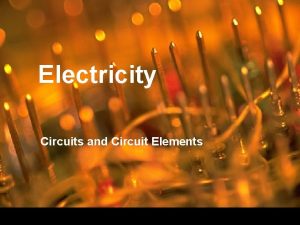Chapter 4 Sequential Circuits 4 1 Sequential Circuit





















- Slides: 21

Chapter 4 Sequential Circuits

4 -1 Sequential Circuit Definitions • Combinational Circuits + Storage element • output depends both on previous state and input Fig. 4 -1

Storage element • (a): a buffer • t. G the delay • the information enters the buffer at t and output at t+ t. G • the stored information only retained in buffer by t. G • longer storage time is necessary in most applications Fig. 4 -2

Synchronous clocked sequential circuit Use flip-flop Fig. 4 -3

4 -2 latch • A storage element can maintain a binary state indefinitely, until directed by an input signal to switch states. • The most basic storage elements are latches. Fig. 4 -4 SR latch with NOR gates

Simulation for SR latch Fig. 5 -5


latch with control input Fig. 4 -7

D (Data) latch Fig. 4 -8

4 -3 Flip-Flops A change in value on the control input allows the state of a latch in a flip-flop to switch. This change is called a trigger The trigger enable (trigger) the flip-flops See Fig. 4 -3 for sequential circuits A present (original) and next (new) state occur in flipflop before and after the trigger, respectively The most important element in sequential circuits Can be derived from latch

Edge-trigger Flip-Flop Negative-edge-trigger Flip-Flop (Master-Slave flip-flop) Fig. 5 -11

Edge-trigger Flip Flop Positive -edge-trigger Flip-Flop

Symbols Fig. 5 -13

Symbols Fig. 4 -12

4 -4 Sequential Circuit Analysis The output and the next state are a function of the inputs and the present state. An example input equations output equation Fig. 4 -13 15

State table

Two-dimensional state table

Mealy model/Moore model Mealy model circuits Sequential circuits in which the outputs depend on the input, as well as on the states The circuits in Fig. 4 -13 Moore model circuits Sequential circuits in which the outputs depend only on the states The circuits in Fig. 4 -14

A Moore model circuit (Fig. 4 -14)

State diagram (a): for Fig. 4 -13 (b): for Fig. 4 -14

Sequential Circuit Simulation A simulator for the input/output of a designed circuit Functional simulation Timing simulation
 Advantages of parallel circuits over series circuits
Advantages of parallel circuits over series circuits Non bistable sequential circuits
Non bistable sequential circuits Analysis of sequential circuits
Analysis of sequential circuits Rangkaian logika sekuensial
Rangkaian logika sekuensial Finite state machine sequential circuits
Finite state machine sequential circuits Vending machine asm chart
Vending machine asm chart Analysis of sequential circuits
Analysis of sequential circuits Non bistable sequential circuits
Non bistable sequential circuits Sequential circuits prelude
Sequential circuits prelude Sequential circuits
Sequential circuits Sequential circuits
Sequential circuits Analysis of synchronous sequential circuits
Analysis of synchronous sequential circuits State diagram
State diagram 74ls112
74ls112 Moore machine
Moore machine Sequential circuits
Sequential circuits Circuits and circuit elements
Circuits and circuit elements Sequential circuit analysis
Sequential circuit analysis Modulus counter
Modulus counter Analysis of sequential circuit
Analysis of sequential circuit Sequential circuit analysis
Sequential circuit analysis Combinational vs sequential logic
Combinational vs sequential logic

